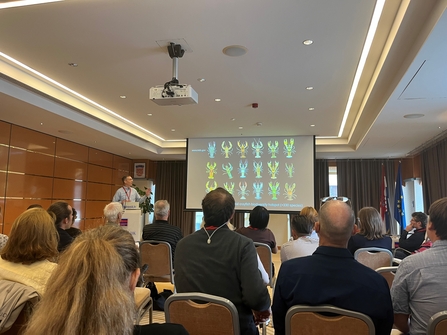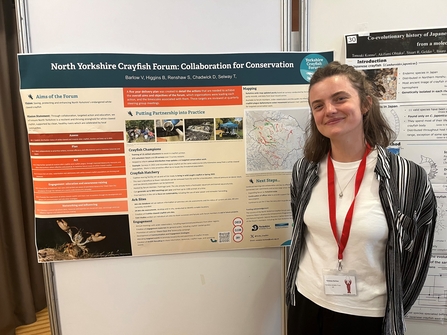Although it may sound like the study of the universe, Astacology is actually the study of freshwater crayfish. The International Association of Astacology (IAA) hosts a conference every two years, bringing together crayfish enthusiasts from across the world (and yes there are a lot of us!). This year, hosted in Zagreb the capital of Croatia, was no exception with over 100 attendees from 25 different countries across 6 continents.
Crayfish Conference – Zagreb
Croatia's native noble crayfish - UNESCO World Heritage Site, Plitvice Lakes National Park.

The International Association of Astacology Conference, Croatia
Globally, crayfish play an important role within their ecosystem. They act as water quality indicators, keystone trophic regulators, ecosystem engineers, and enhance biodiversity by controlling abundance of other species in their community.
Crayfish are also a significant part of the food industry in countries such as Sweden, The U.S., and Australia where they are stable part of the diet and have cultural significance including ‘Kräftskiva’ a Swedish crayfish eating festival.
Many crayfish species are impacted by the same issues as our endangered white-clawed crayfish in the UK, with 141 out of 573 species of crayfish classed as threatened (ICUN). Pollution, habitat loss and introduction of invasive crayfish and were a reoccurring theme throughout the conference as the cause of global population declines.
The conference allowed me to network with researchers and practitioners, providing me with an insight into conservation efforts and lessons learnt in other countries. There were talks on a large range of topics and specialisms, from the crayfish pet trade spreading invasive crayfish to studies on crayfish demonstrating they experience pain and anxiety. One of my favourite takeaways is that beaver dams can function as a barrier for upstream movement of signal crayfish. Research presented on signal crayfish control methods and successes of native crayfish conservation, gives hope to the future of our white-clawed crayfish.
It also gave me the opportunity to share the work of the North Yorkshire Crayfish Forum on a global stage by presenting a poster on our achievements so far including; ark site creation, setting up a captive rearing facility, ongoing monitoring of populations, and public outreach.

Vanessa Barlow, Crayfish Project Officer, at the International Association of Astacology Conference in Zagreb, Croatia.
The conference offered a field trip to Plitvice Lakes National Park, a UNESCO World Heritage Site, known for its breath-taking scenery and waterfalls. The park is home to two species of native crayfish, the noble crayfish (Astacus astacus), and the stone crayfish (Austropotamobius torrentium) which is closely related to our white-clawed crayfish. Although both species are present, they inhabit different niches within the park’s ecosystem so there is very little competition between them. The park staff regularly monitor these populations, and we were lucky enough to see noble crayfish during a survey.
Despite the global threats facing crayfish, it was inspiring to witness the passion and dedication of astacologists worldwide who are striving to deepen our understanding of this fascinating group of creatures.
For more information about or crayfish project and Yorkshire Crayfish Forum (formally North Yorkshire Crayfish Forum) follow them on X (formally Twitter) @Yorks_Crayfish or visit Yorkshire Crayfish Forum (arcgis.com).






